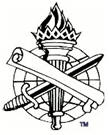

Scripture Reading: 1 Corinthians 4:14-21
Bible Authority, Part 5
How to Establish Bible Authority
Intro.
1. “God’s ways, revealed in God’s word, are sufficient to accomplish God’s purposes.” 2 Tim. 3:16-17; 2 Pet. 1:3
2. How do we know what is authorized and what is not? (Col. 3:17)
3. God has given us a pattern by which we establish authority in things pertaining to life and godliness, Heb. 8:5; 1 Cor. 4:17.
4. Our task is to properly use God’s authoritative word (know and obey), Eph. 3:3-4; 2 Tim. 2:15.
5. Unless we know how to establish and apply Bible authority we will not be able to “hold fast the pattern of sound words” (2 Tim. 1:13).
I. HOW TO ESTABLISH NEW TESTAMENT (GOD’S) AUTHORITY.
A. Command or Direct Statement in NT (Christ or inspired teacher).
1. Command, cf. Mk. 16:15.
2. Direct statement, cf. Mk. 16:16.
3. Illustrate: Lord’s Supper – What to do, 1 Cor. 11:24-25.
B. Apostolic Approved Example from the NT.
1. Imitate (lit., “become”) Paul…my ways in Christ…, 1 Cor. 4:16-17.
a. Direct statement (command) to do so, 1 Cor. 11:1.
b. Follow the apostolic pattern (example), Phil. 3:17; 4:9.
2. The consistent pattern of doctrine and practice for individual Christians and congregations, under apostolic teaching and guidance (cf. Acts 2:42).
3. Illustrate apostolic approved example: Lord’s Supper – When to eat, Acts 20:7; 1 Cor. 11:20, 33
C. Necessary Inference from NT (conclusion necessarily implied).
1. “That which, though neither expressly stated nor specifically exemplified, [yet] is necessarily implied by the clear import and meaning of the language used.” (Walking by Faith, Cogdill, 14)
a. Example: Matt. 3:16 – NI that Jesus went down into the water.
b. Illus: Lord’s Supper – How often to eat it, 1 Cor. 11:20, 33; Acts 20:7 (cf. Exo. 20:8).
2. Necessary inference is not…
a. Simply a reasonable inference, Jno. 21:21-23.
b. What we would like to conclude, Matt. 12:24 (14); Jno. 7:24.
3. The binding authority of NI is that it is a conclusion for which there is no alternative (no escape; no other conclusion can be drawn from the Scriptures).
4. Jesus used NI to teach the truth:
a. Matt. 22:31-32: Drew a NI from the tense of a verb that affirms the truth of resurrection (see its weight of authority, Matt. 22:29).
b. Matt. 19:3-6: Used NI to affirm one cannot put away for “any reason.”
5. Inspired writers of NT used NI to reveal truth, Heb. 7:12.
6. Jesus expects us to correctly use NI, Mk. 2:9-11; Lk. 12:54-59.
-cf. Jno. 9:30-33: Man used NI to conclude Jesus was from God.
II. MAN-MADE RULES OR DIVINELY APPROVED PATTERN FOR HOW TO ESTABLISH HEAVEN’S AUTHORITY? Acts 15:6-21
A. Authority in Question: Must Gentiles be Circumcised and Commanded to Keep the Law of Moses (LOM) to be Saved? (15:1, 5)
1. Apostolic example of Gentile salvation without LOM, 15:7-11 (14:3).
2. Necessary inference, 15:12. (Miracles accompanied conversion of Gentile obedience to the gospel without the works of the LOM – therefore, God’s approval is necessarily inferred.)
3. Direct statement of Scripture proves Gentiles are called and saved by the gospel of Christ, not the LOM, 15:13-19.
B. Any One of these Ways to Establish NT Authority is Sufficient to Prove God’s Binding Authority.
1. Do not need all three ways to establish authority present before anything is authorized (i.e., before binding authority exists):
a. Any one was enough to establish God’s authority on Gentile salvation without the LOM (Acts 15:7-19).
b. cf. Lord’s Supper (Acts 20:7): W/o NI we have no authority for how often to eat it.
c. cf. Giving (1 Cor. 16:2): Without NI we have no authority to lay by in store every Sunday.
Conclusion
1. Without a God-approved way to establish Bible authority we will never be able to do all things in the name of Christ (Col. 3:17). Everyone will go their own way, not God’s (Matt. 7:21-23).
2. The same will be true about understanding the nature of Bible authority (next lesson).